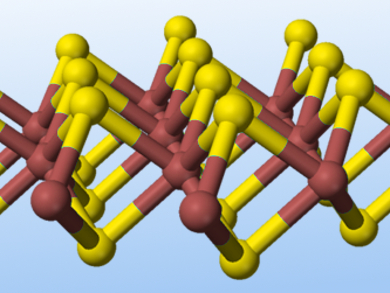Since the discovery of graphene, researchers have searched for other 2D materials with unusual physical properties. One such material, molybdenum disulfide, shows promise for electronic and optoelectronic device applications. Bulk MoS2 has a layered structure similar to graphite, and it becomes a metal under pressure or strain. Monolayer MoS2 retains its bandgap under pressure, but the gap changes from direct to indirect. Electrons can emit photons directly in materials with direct band gaps, but not in materials with indirect band gaps.
Xiaofeng Fan, Jilan University, Changchun, China, and colleagues used Density Functional Theory (DFT) calculations to study the electronic properties of single and multiple layers of MoS2 under pressure. They found that the bond angle controls the electronic structure around the band gap for monolayers under pressure, while coupling between layers controls this structure for multilayer and bulk MoS2. The band structure can be modulated strongly, which opens up the possibility that the luminescence of MoS2 could be adjusted under readily achievable conditions.
- The Electronic Properties of Single-Layer and Multilayer MoS2 under High Pressure,
Xiaofeng Fan, C.-H. Chang, W. T. Zheng, Jer-Lai Kuo, David J. Singh,
J. Phys. Chem. C 2015.
DOI: 10.1021/acs.jpcc.5b00317




